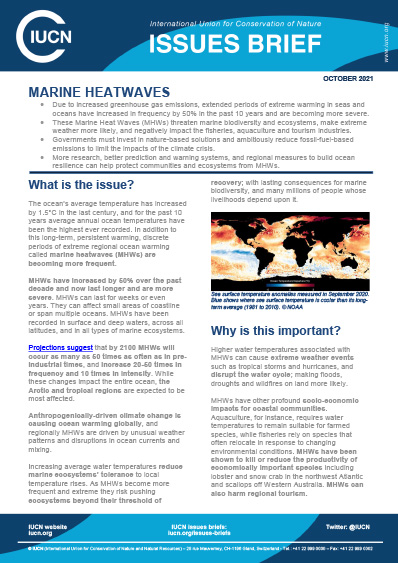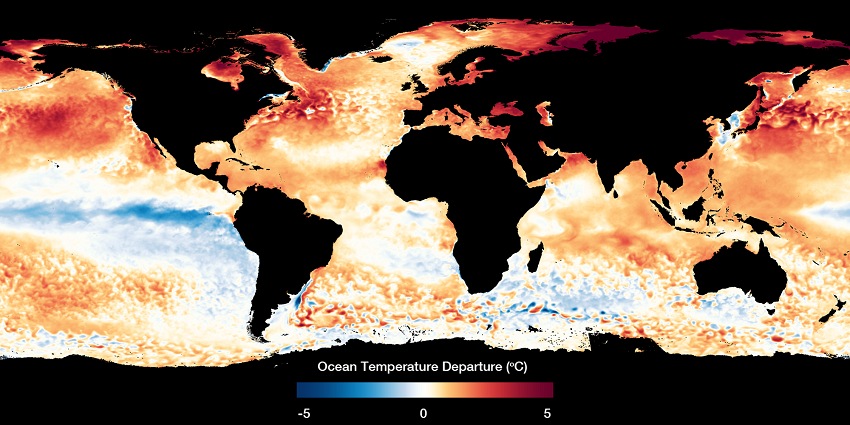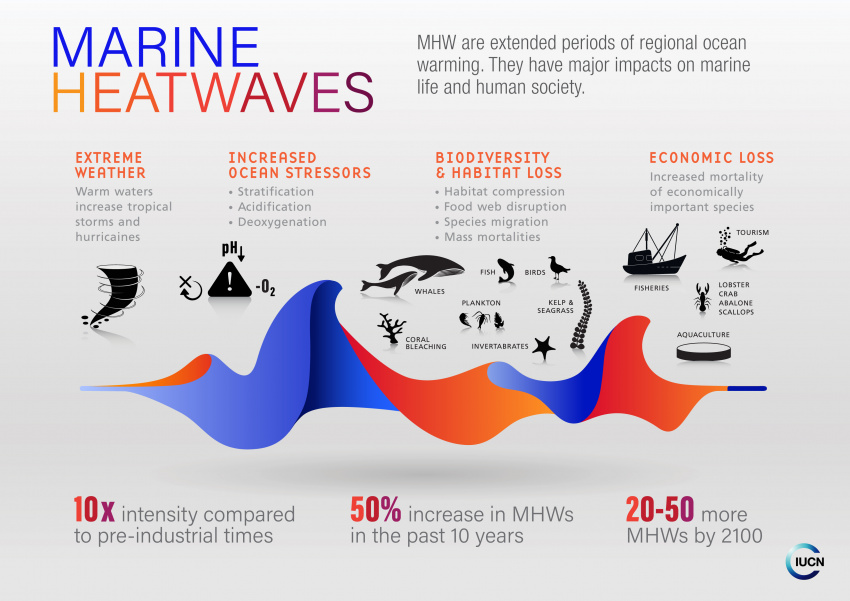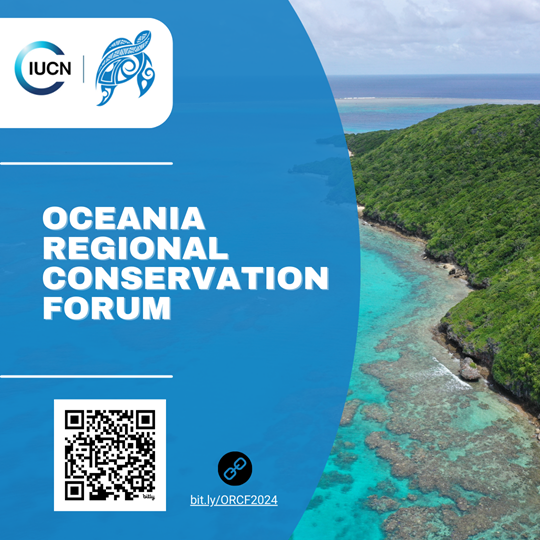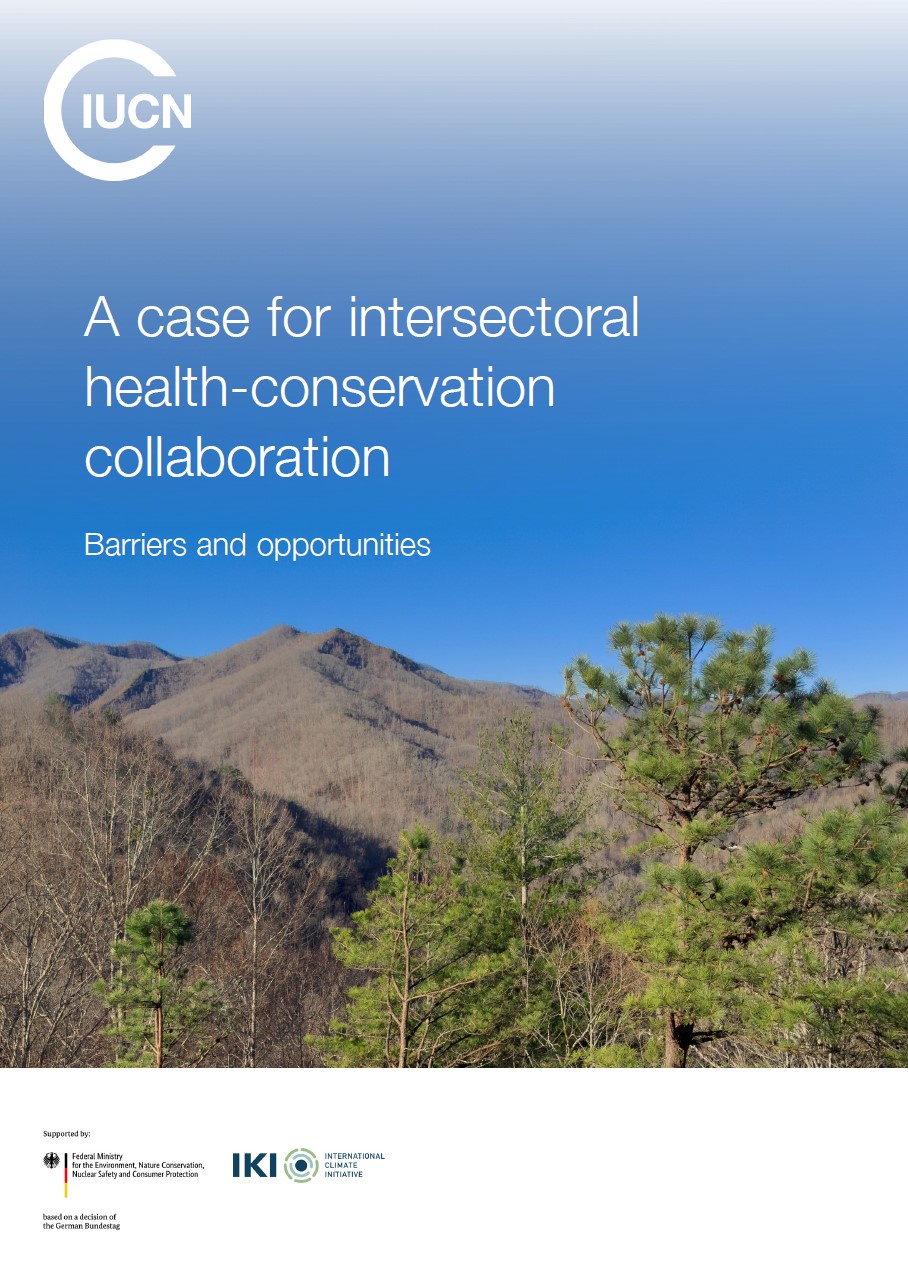What is the issue?
The ocean’s average temperature has increased by 1.5°C in the last century, and for the past 10 years average annual ocean temperatures have been the highest ever recorded. In addition to this long-term, persistent warming, discrete periods of extreme regional ocean warming called marine heatwaves (MHWs) are becoming more frequent.
MHWs have increased by 50% over the past decade and now last longer and are more severe. MHWs can last for weeks or even years. They can affect small areas of coastline or span multiple oceans. MHWs have been recorded in surface and deep waters, across all latitudes, and in all types of marine ecosystems.
Projections suggest that by 2100 MHWs will occur as many as 50 times as often as in pre-industrial times, and increase 20-50 times in frequency and 10 times in intensity. While these changes impact the entire ocean, the Arctic and tropical regions are expected to be most affected.
Anthropogenically-driven climate change is causing ocean warming globally, and regionally MHWs are driven by unusual weather patterns and disruptions in ocean currents and mixing.
Increasing average water temperatures reduce marine ecosystems’ tolerance to local temperature rises. As MHWs become more frequent and extreme they risk pushing ecosystems beyond their threshold of recovery; with lasting consequences for marine biodiversity, and many millions of people whose livelihoods depend upon it.

